At 304 Holloway Road you’ll find a 24 hour grocery store, above which sits a shabby three-storey flat, complete with decaying paintwork and a boarded up window.

304 Holloway Road
Despite its dilapidated state, the apartment on this north London road actually has quite a tale to tell… a story involving music, madness and murder.
*
Between 1961 and 1967, the accommodation above 304 Holloway Road was rented out by a fellow named Joe Meek.

Joe Meek (photo: Getty Images)
Born in Newent in Gloucestershire’s Forest of Dean in 1929, Joe Meek’s early upbringing was rather bizarre- for the first four years of his life he was raised as a girl thanks to his mother’s intense desire to have a daughter.
Joe Meek first arrived in London in 1954 after landing a job as a sound engineer for Stones; a popular radio and record shop on the Edgware Road.
It was a job which suited him well. From an early Joe had been fascinated with electronics and was always scavenging components with which he could tinker. With these various bits and bobs he would experiment, cobbling together circuits, radios and so on.
Joe Meek was also fascinated by outer space; a passion which was nurtured when he became a radar mechanic for the RAF during his period of national service.

Joe Meek whilst serving in the RAF
After spending time working at Stones, Joe progressed to a new job, becoming a producer at Lansdowne Recording Studios, moments away from his home on Arundel Gardens in Notting Hill.
Confident in his new role, he wrote a letter home to his mother stating, “I’m sure your son is going to be famous one day, Mum.”

Lansdowne Recording Studios (photo: Google Street View)
At Lansdowne, Joe Meek proved to be quite the maverick, frequently ignoring his superiors in order to pursue his quest of developing new sound techniques.
Whilst at the Notting Hill studio, he maintained a strictly guarded ‘secret box of sounds’; a container kept under lock and key which held all manner of unusual objects for creating unorthodox audio effects.
Before long, Joe became tired of working within a large organisation and decided to go it alone as an independent record producer.
In pursuit of his ambition, he moved into 304 Holloway Road where he set about creating a makeshift but innovative studio.

304 Holloway Road (marked in red) as it appeared in the early 1960s (copyright Jim Blake)
The independent label established in Holloway became known as RGM Records (Joe’s full birth name actually being Robert George Meek).
At the time, such a move was revolutionary.
In the late 1950s and early 60s, pop records were the domain of big corporations, tightly controlled by cigar-puffing businessmen. The sound engineers who worked for these companies did so in strict, clinical environments, armed with clipboards and donned in white lab coats.

Sound engineering in the traditional way
Joe Meek’s way of working was the complete opposite to this traditional method.
Packed with all manner of improvised equipment, his Holloway Road studio was easy-going and unconventional.
From the stairway to the bathroom, all rooms were made available for recording sessions. Joe would also use seemingly every day domestic items to create all manner of new sounds, the flat itself more or less becoming an instrument in its own right. He was particularly fond of stamping on the upper floors to enhance drumming effects.
As his experiments developed, Joe Meek’s work took on an eerie, futuristic sound; one which he hoped would define an era as the space-age began to grip the 1960s.

Joe Meek at work in his Holloway Road studio
*
The first major hit to be produced at 304 Holloway Road was Johnny Remember Me, a song about a young man haunted by his dead lover. Sung by John Leyton, the single reached UK number one in July 1961.
The success of Johnny Remember Me was followed by an even bigger hit in August 1962… Telstar.
Written and recorded by Joe Meek at 304 Holloway Road, Telstar was an instrumental track created to celebrate the success of the radical new communications satellite which had been launched in July 1962.

The original Telstar satellite under construction
Played by Meek’s backing group, The Tornados, the ode to space technology featured all manner of sci-fi sounds which had been concocted in the unlikely setting of the north London studio.
The record was an instant success. As well scoring a number one in the UK, it became the first single by a British group to hit number one in the United States; a massive achievement.
Telstar is now considered to be Joe Meek’s masterpiece (it can be heard at the end of this article) and such was its popularity that it should have set him up financially for life.
However, a French composer by the name of Jean Ledrut claimed that Meek had pinched the tune from a score he’d written for the Napoleonic film, Austerlitz. This led to a lengthy legal battle which prevented Joe Meek and the Tornados receiving any royalties from their hit.
*
Joe Meek continued to forge extraordinary new sounds in his cramped studio, but the stresses of life and business were beginning to take their toll.

Joe Meek in 1966; photo copyright David Peters (David managed a group called ‘Dannys Passion’ who recorded with Joe Meek. You can read about his memories here: http://www.dannyspassion.webeden.co.uk/)
Joe was homosexual- illegal in Britain at the time and something which led to the producer being blackmailed on numerous occasions.
By the mid-1960s, the music scene was changing rapidly and Joe Meek’s once innovative melodies were beginning to lose favour. The last major hit to be produced at Holloway Road was Have I the Right by The Honeycombs (a band noted for having a female drummer) which was released in 1965.
As the decade pushed on, RGM records began to struggle financially. Convinced he’d win the Telstar case, Joe had been spending heavily, confident that the money would eventually come through. It didn’t though of course.
Friends of Joe Meek noticed a distinct change in his character.
Clearly under stress, he’d developed a short, volatile temper and, more worryingly, had become intensely paranoid, convinced that his Holloway Road flat had been bugged by rival companies in order to steal his ideas.
So paranoid was Joe that he refused to leave anyone alone in the studio for fear that they’d snoop on his work.

Joe Meek outside his Holloway Road studio
He was also becoming deeply obsessed with the occult and took to setting up recording equipment in graveyards, hoping that spirits from the other side would offer him guidance.
One evening, one of these graveyard recorders picked up the sound of a cat mewing- Meek was convinced that a human spirit was trapped in the feline body and that the cat-like noises were in fact desperate calls for help.
He even began to claim that his idol, Buddy Holly (killed in a plane crash in 1959) made frequent visitations to the Holloway Road flat late at night, offering snippets of musical wisdom.

The legendary Buddy Holly… whom Joe Meek claimed would regularly visit 304 Holloway in spirit form…
*
Joe’s mental state was deteriorating rapidly.
in January 1967 things came to a head when the body of a 17 year old youth named Bernard Oliver was discovered in rural Suffolk. The victim had been murdered in a particularly gruesome manner; expertly cut into eight pieces before being packed into a suitcase.
Bernard Oliver had been working as a factory hand in North London and, prior to his murder, had been missing for two weeks.
When the Metropolitan police stated that they would be interviewing all known gay men in London, Joe Meek became terrified. Even though he had absolutely nothing to do with the case, his delusions were pushed to new heights as he became convinced that the police would somehow find a way of implicating him.
*
On the morning of 3rd February 1967 (which happened to be the 8th anniversary of Buddy Holly’s tragic death), Patrick Pink who was a friend and studio assistant, called in to see Joe- who refused to speak and promptly stormed off upstairs.
Patrick mentioned the fact that Joe was in a bad mood to Violet Shenton, the long suffering landlady of 304 Holloway Road who often took to knocking the ceiling with a broom handle when the sound levels became too much.

Violet Shenton
In her typically blunt, but motherly and well-meaning manner, Mrs Shenton stubbed out a cigarette and told Patrick that she’d go and sort her tenant out. When she arrived upstairs, the last words Violet was heard to say were “calm down Joe”… a statement which was suddenly followed by two gunshots…
Using a hunting gun which had been left in the flat by singer, Heinz Burt, Joe Meek had committed both murder and suicide within seconds, shooting Violet before quickly turning the weapon on himself.
He was 37 years old.
*
Just three weeks after the lethal shooting, a French court finally brought the Telstar case to a close.
They ruled in Meek’s favour, stating that he couldn’t possibly have plagiarised Jean Ledrut’s work as the film wasn’t released in the UK until 1965; three years after the success of Telstar.
Today, Joe Meek’s former home and studio sits quietly on the Holloway Road, offering little sign as to the creativity and tragedy which played out within decades before.

304 Holloway Road… a shadow of its former self
The only reminder of the premises’ former role is a black plaque… which, quite fittingly, is located right beside a derelict satellite dish; an item which Joe Meek would no doubt have taken great interest in.
A few hundred yards away, another small reference can be found… a Banksy-esque graffiti mural depicting Joe Meek on a grubby wall opposite Holloway Road tube station.
To listen to Joe Meek’s most famous work, click the clip below:





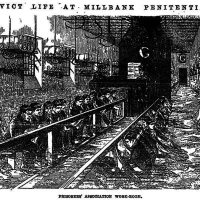
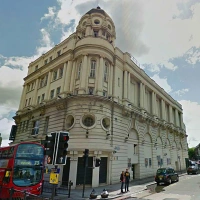
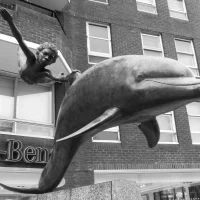


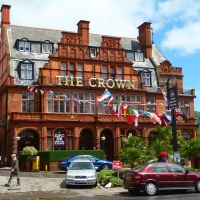
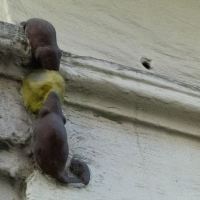


Quite a sad story. The Telstar theme seems familiar to me now that I hear it again though I had never heard of Joe Meek until today.
It is indeed a sad, tragic story for all involved. Glad the piece introduced you to the work of Joe Meek.
Wow, and all of that occured just round the corner from where I live…who knew?! Clearly you! Thanks for another fascinating, albeit deeply sad, story…
Thanks for the kind comment, glad I helped you discover Joe Meek’s story 🙂
I used to be a student at UNL, just down the road and as a fan of Joe Meek, looked out for the flat when I was there. Saw Telstar, the film, on telly a few months back and thought they’d done an astonishingly good job at recreating Violet Shenton’s luggage shop and the bank next door, it did look like Holloway Road. But seeing the photo here, you can see how accurate they got it. I think he’s been given a proper blue plaque now by English Heritage.
Thanks for the comment. You’re right about the blue plaque; it’s in his home town of Newent.
I still think that there should also be an EH blue plaque at 304. After all it is where he perfected and created his most influential recordings.
Thanks for the comment, Ian. I couldn’t agree more; a very overlooked place.
Fantastic article, fab blog. Have liked your page on FB and shared it as well 🙂 Both my uncle (Garnet Humphries) and his father, my grandad (Henry Humphries) were black cabbies in London and I’m really proud of it!
Hi Jude, thank you so much for the lovely comment; really appreciate your support. I bet your uncle and granddad had quite a few tales to tell 🙂
[…] and many further examples could have been drawn upon. The unfortunate life and death of musician Joe Meek – who shot dead his landlady on Holloway Road before taking his own life – is a […]
[…] and many further examples could have been drawn upon. The unfortunate life and death of musician Joe Meek – who shot dead his landlady on Holloway Road before taking his own life – is a prominent […]
A really interesting read! The ‘Banksyesque’ piece is actualy by a street artist called Stewy, who likes to create his pieces in places which are related to their subject. I remember him telling me about this piece, so it’s great to hear the story behind the character!
That’s great, many thanks for the info. Always wondered who the talented artist was behind it 🙂
One of his guitarists became the lead guitarist to deep purple! And one of his last drummers became the drummer for Hendrix! …..so the movie said anyways
Wow! Never knew that 🙂
Reblogged this on ANITA B .
First 45 my brother bought in 1962 when he elwas 15. I,m a big fan of Joe. The film was excellent, even with the “add ons” Who knows how far he would have got if he,d lived. Sad, but,fasinating story.
I have lived in Holloway for over 30 years and never knew about the Joe Meek story until I saw the film last night. Very interesting, but sad and tragic too. I will now look out for the flat he lived in on Holloway road and the mural. A creative but tragic character by all accounts, who was taken advantage of by mean, nasty people.
My pleasure, Breda. Thanks for the kind comments.
This is a fantastic read and insight. As an aspiring music producer myself from just up the road in Finsbury Park, i find Meek’s innovation very inspiring and to think a UK and US no.1 hit back in the 1960s out of a make shift studio flat on holloway road. Wow!
Thanks, Miles 🙂 He was indeed a very clever and inspirational guy which makes his downfall all the more tragic.
Thanks again.
Hi, my good friend Albie Wycherley recorded with Joe. Albie ( now deceased ) was the brother of Billy Fury. Joe called Albie ‘ Jason Eddie ‘ because with his blonde hair, Joe said Albie looked like Greek Adonis. Eddie came from Albie’s middle name – Edward. Albie has told me many tales about Joe, and I also have a C.D called RGM Rarities which features a very young Freddie Starr, Jason Eddie and Jimmy Tarbuck.
Really interesting, Geoff. Many thanks for the comment.
[…] by JanReetz ViewFromTheMirror JoeMeekSociety Tapeop DannysPassion Photo credits… Meek at Lansdowne – David Peters? […]
An incredible talent who obviously made his mark on the history of British pop music I still have the original single of Telstar but now it means so much more to me.
Thanks for the nice comment, Dave.
Dear Rob,
I’ve just stumbled across your blog, and I’m very glad to have done so.
Although I was aware of 304 Holloway Rd. and Joe Meek, I didn’t know about Joe’s early relationship with his mother. Poor Joe. At times, I struggle to understand some parents. For example: It took you 4½ years to learn The Knowledge, (not to mention the lessons, plus test, for your ordinary driving licence, beforehand) in order to drive a Black Taxi around London. Yet, just about anybody can become a parent; no lessons, no licence/s. To paraphrase Phillip Larkin: They phone you up, your parents …
Anyhow. Diatribe over. I’d really like to know where you found the information about Joe’s mother dressing him as a girl for the first four years of his life.
I’ve now bookmarked your blog. I’ll definitely be returning regularly.
All The Best To You,
DieselEstate
Many thanks for the kind comment 🙂 I can’t remember where I got that information now (been quite a while since I wrote this piece), but there are plenty of references to it online.
Thanks again
A fascinating and tragic story, thanks for the article. I was actually looking for articles on the much more recent DuWayne Henry case when I stumbled across this. DuWayne Henry was a producer of electronic music too.
Many thanks for the kind words, PK.
Rather amazing that he had these financial problems after 3 No. 1 UK hits and a big No. 1 in the US!
Agreed, I thought that too.
What a superlative essay on Joe Meek, the innovative record producer. I really enjoyed the photographs and videos as well. It is also an extremely sad, moving piece. I remember hearing “Telstar” when it was playing on the radio. It was during the short presidential term of JFK. I also remember the Honeycomb with the lovely Honey on drums. Oddly enough, I also saw Joe Meek’s movie “Sing and Swing” at the movies. It is fun watching the clips at youtube and seeing Steve Marriott and Ritchie Blackmore. I now want to track down a copy of the movie about Telstar. I have been listening to the arists Joe Meek worked with like Mike Mike Berry and Screaming Lord Sutch. I really love the sound. Once again, what a fine piece this is!
Many thanks for your kind words, Gerard; much appreciated.
The photograph of Shenton’s shop (with the floors Joe occupied ringed in red) is mine and has “escaped” on to the Internet without my permission thanks to being “lent” (again without my permission!) to the BBC for their Arena documentary back in 1991. I don’t mind it being included here, but please can you show it as “Copyright Jim Blake”. I actually took it ON THE DAY JOE MEEK DIED, FRIDAY FEBRUARY 3rd 1967, around lunchtime. I still have the original negative so can prove immediately the picture is my own if any doubts arise. Thanks!
Sorry about that, Jim I’ve now credited you. Incredible to hear that you were there that fateful day…
There used to be regular Joe Meek commemorative gigs, I remember seeing Screaming Lord Sutch and others appearing at the (now demolished) Holloway pub next to the tube and also the Horatia pub on Holloway Rd back in the nineties.
Thanks Charlie. My Dad met Screaming Lord Such once; got some political badges off of him which he gave to me!
I have just watched a programme on BBC that mentioned Joe Meek and I remember my Father talking about him around the time he died. We lived at the time in Tufnell Park road and I still have an old (not working) tape recorder that I think may have been owned by Joe Meek. We left the area in the early 70’s but I still have the tape recorder in the loft.
[…] life on the moon in 1960. His fascination with the occult led him to record creepy songs, sounds in graveyards and cats “talking”. The dude was from another […]
[…] More about Telstar man: https://blackcablondon.net/2012/09/20/304-holloway-road-inside-the-tortured-mind-of-the-telstar-man/ […]
Thanks for the article, cleared a lot of things up regarding the life of this troubled, brilliant man. ‘Telstar’ was extraordinary and kind of sums up the technological optimism of the early 60s. Looking back, Meek’s lesser known work, like ‘Robot’ and other numbers, seems to have seriously influenced Devo, and the ending of the accompanying film clip – where cops break up the Tornado band members – must have been recalled by the writers of ‘Monty Python And The Holly Grail’.
Thanks Geoff, interesting thoughts.
Whoops, spelling error, not channeling Buddy, meant ‘Holy Grail!’
My friend has just released this track, 304 Holloway Road, on his new album. Enjoyed the article and finding out some background to the song
This is great Justin, many thanks for sharing.
May sound contentious here, but was wondering this…
“Why ARE we celebrating a Murderer ?”
(We’re talking “Blue/Black-Plaque” commemoration)
End of the day, he murdered poor Violet Shelton…
Put things into perspective like this….
“If” someone blasted YOUR Mum in the face.. (shotgun)
Turning her face into ‘minced-beef & ‘bone fragments’…
Thought not –
We wouldn’t be shouting the odds, nor commemorating them*.
*(the life of a murderer)
Flip side of the coin however…
Yeah, those THREE records WERE very famous in their day.
Yes, it “IS” of interest that those track were recorded there (304)
Will there be a “Blue/Black-Plaque” for Gary Glitter or Rolf Harris ?
Nah, thought not… (& Hope not, too !!!!)
Am just throwing this ‘into the mix’ for folks to ponder on.
Didn’t set-out to be provocative, nor contentious (truthfully)
Just crossed my mind this morning, about poor Violet Shenton*
*(uncelebrated – unlike her murderer)
I’d known about the article, some 15-20 years ago (in detail)
But was looking for a photo’ of poor Violet
(which you’ve provided – cheers, it’s appreciated !)
I’d never seen a picture of her, till now.
Also, I didn’t know of the French-Lawsuit (‘Telstar’)
Many thanks for such a fine, FULL article.
Such a shame/pity that it had such a violent & evil-ending.
Thanks Hornchurch; they’re very good points.
Film was very well done , I lived in London from 77 to 94, and didn’t realise the story. Wish I had gone to see where it all happened. Telstar was the first 45 my older brother bought, I still have it, and, play it now and then. Am now in the process of buying anything of Joe’s, brilliant music, and it stands the test of time.(I was 5 when Telstar came out!).I plan to visit London when it’s possible, definitely go to 304 Holloway Road!